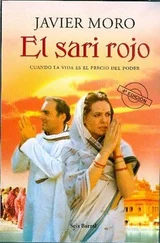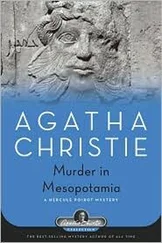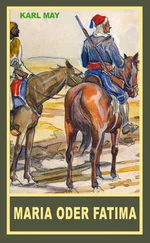As Said pointed out, “The Orient is an integral part of European material civilization and culture,” 76and this assumption made “Orientalism as a Western style for dominating, restructuring, and having authority over the Orient” 77by scaling the relation between West and East in terms of superiority and inferiority. After all, as Valerie Kennedy notes, the “imperial project emphasized the sense of Western superiority to Oriental cultures that already characterized 18th-century Western conceptualizations of the East and that is described by Said as the view that Westerners are ‘rational, peaceful, liberal, logical, capable of holding real values, [and] without natural suspicion,’ while those from the East are ‘none of these things.’“ 78By extension, these notions were projected over the past. The people of ancient Assyria and Babylonia lived in an embryonic form of society, a sort of pre-form civilization, leading a malformed political life, commanded by despotic and idolatrous rulers who defended and instilled brutal moral values. Hence, just as the Ottoman society needed to be saved by the West from its barbarism, so the past needed to be rescued from its moral decay.
As soon as the first discoveries were unearthed in the soil of ancient Assyria, the Western idea , 79the dream 80of Assyria that the Greco-Roman texts and the Old Testament had nurtured for centuries and which now materialized, took shape. These discoveries, automatically considered an integral part of the European heritage, could only be scrutinized and appropriated, transported to the museums of London, Paris, and Berlin, where they could attest to the public, in what is a remarkable imperialistic discourse, the political dominion of the European nations and their conquests of today and of yesterday . Did not Rudyard Kipling recall, celebrating Queen Victoria’s jubilee in an exquisite poem in 1897, the glory of England by associating it with its Mesopotamian past? – “Far-called, our navies melt away;/On dune and headland sinks the fire:/Lo, all our pomp of yesterday/Is one with Nineveh and Tyre!/Judge of the Nations, spare us yet,/Lest we forget—lest we forget!” 81said the writer.
Nowadays, as we witness the destruction of monuments, cities, and artifacts of the ancient Near East, as Paul Collins pointed out, we are inundated with messages of horror and disbelief. This response is not just related to the brutality of the acts of profanity, but above all to the fact that those monuments and relics are perceived as part of the roots of modern Europe. 82Summarizing, Mesopotamia as seen until today, especially in popular culture, cannot be dissociated from the orientalist notions that claimed it as an inferior civilization, deserving to be condemned and in need of rescue, but above all as an integral part of the mythical European roots.
So, having this land as the central theme of our analysis and taking into account its almost total forgetfulness by academics who approach reception of antiquity in cinema, we set out with our study taking the following assumptions into account: the orientalist notions to which Mesopotamia was unable to escape, its dependence on classical and biblical narratives, and the scope of reception studies that will enable us to interpret the message underlying the film and its impact.
***
In order to assert itself, cinema needed to compete with other forms of cultural expression of the nineteenth century. Since its genesis, it has thus been forced to affirm itself culturally and artistically through communion and interaction with canonical arts such as photography, painting, sculpture, opera, and literature. 83We cannot say, however, that it was a mere mimicry, but instead a true and necessary dialectic that led to its legitimation among European and American audiences. It is in this sense that we must return to the past before entering the cinematographic universe of the twentieth century. The tragedies, paintings, and operas produced about Mesopotamia for centuries were among the influences that cinema collected to convey the reality of the past. Besides, the cinema was also influenced by the archaeological discoveries in the Mediterranean and in the Near East in the late nineteenth and early twentieth centuries. This wave of new cultural and material finds needed an authentication that only a realistic reproduction like the one that cinema could offer was able to grant. In this context, the predilection of the early days of cinema for antiquity is partly explained.
Therefore, in the first part of the book, our analysis will focus on the artistic and literary interpretations of Mesopotamia that would deeply inspire cinematographic productions. We aim to understand how the history and culture of Mesopotamia were understood from the time of its first reception, with the Greeks and the Old Testament, until the present. The Classics and the biblical account offer the first idea of the land between the rivers. As we will have the opportunity to see, the idea forged during this time would persist over time, and so history and myth would be forever tied and undistinguishable. The first chapter will show how ancient legends emerged, what was their purpose, and how their romanticism prevailed in the imagination of the Westerner. During the twentieth century it was not necessary to speak of the historical kings of antiquity, but of the folklore tradition of men and women of power that the classical era produced. Indeed, what was important was to emphasize the stereotype of the other that Mesopotamia always represented to the so-called “West.” The second chapter will deal with the Early Modern period and the literary works and musicalized operas that scaled during this era concerning Mesopotamia. Drama was the key during this time, with the emergence of tragic heroes and heroines who distinguished themselves by the moral and political values (fair or not) they defended. Tragic death and punishment were two aspects discussed and introduced in these artistic creations, which would also later be the subject of debate in the cinema. The final chapter of this section deals with the height of Mesopotamia’s archaeological rediscovery. There is a significant difference between what was thought of Mesopotamia before and after the excavations. However, in general terms, the notions formed over millennia persisted. Above all, art introduced new elements that would also be evident on cinema screens and that transmitted for the first time a more realistic image of this civilization. All these different aspects were, in some way, collected by film producers and screenwriters.
The second part of our book will focus on the analysis of the films themselves. To this end, we decided to divide the study into several chapters that deal with different aspects of this civilization. in Chapter 6, we will study the architecture and landscape of Mesopotamia, focusing on three different poles: the palace, the temple, and the tower. The interest is to understand how each of them has a message to convey about the society and the governing elite. In fact, in a certain way, in the architecture, in its grandeur, aesthetics, and construction, is mirrored the civilization, and as such it constitutes a discursive prop of cinema, carrying a message that should be absorbed by the viewer. In Chapter 7, the political, religious, and social life of the land between the rivers will be the focus. The interplay between the government and the population, as well as the relationship between priesthood and monarchy, gives us clues as to the reasons that led to Mesopotamia’s final downfall. What matters most is to understand the character’s behavior. And in this regard the fascist conduct of the Mesopotamian monarchs transported the viewers of the mid-1950s, for instance, to the recent past. At the same time, the idolatrous behavior of the high priests demonstrated this civilization’s lack of a strong religious moral. It is thus necessary to understand the political and religious message that cinema had to offer about antiquity and how it exposed the anxieties of its own time, both about faith and about leadership. In Chapter 8, the fundamental point of analysis will be the representation of women and their role. The portrayal of women on screen accompanied the development of the movements of female emancipation and the reservations society had in relation to these. The idea of a subversive Oriental woman and an obedient Western one helped to understand the degenerative character of Mesopotamia, in what might be considered an implicit orientalist message. Judith and Semiramis helped to expose this contrast, as well as the goddess Ishtar and the rituals performed in her honor. All contributed to the idea that the Mesopotamian woman was in need of saving and correction, an aspect that reflected society itself.
Читать дальше












